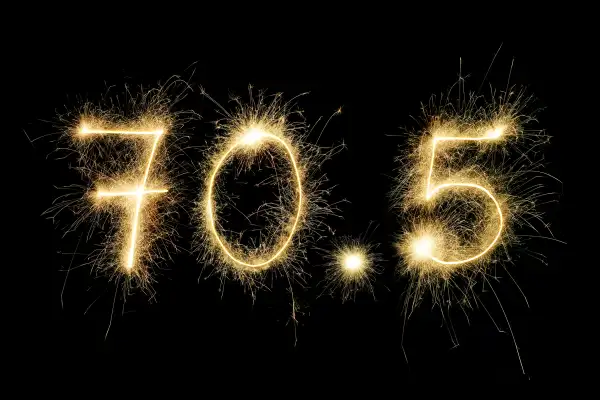Why a $2 Trillion Tax Bill Is Coming Due for Baby Boomers

Uncle Sam has been waiting a long time for this big tax payoff. It starts this year, as the oldest baby boomers hit age 70½ on July 1 and begin taking money out of their tax-advantaged savings accounts as required by law—and paying the income tax that has been deferred, in some cases for decades.
Boomers were the first generation to build their retirement plans around traditional IRAs, 401(k) plans and other tax-deferred savings vehicles. These were introduced in the mid 1970s and came into broad circulation in the 1980s, as part of the seismic shift to employer-sponsored defined contribution plans from defined benefit plans.
Traditional IRAs and 401(k) plans now hold more than $14 trillion. Even if that money comes out at the relatively low marginal income tax rate of 15%, this figure represents more than $2 trillion for the federal government. Of course, it will come out over many years. And the windfall actually began to take shape 11 years ago, when these same leading edge boomers turned 59½ and became eligible to begin tapping their tax-deferred accounts.
But most investors tend to leave their retirement savings untouched to grow tax deferred in order to get the maximum benefit. For millions of retirees, that deferral is coming to an end. The oldest boomers—those born the first six months of 1946—are now subject to annual required minimum distributions (RMDs) from their pre-tax savings. The penalty for not taking an RMD is a stiff 50% of the amount you were obligated to withdraw.
You must take your distributions by Dec. 31, although there is a grace period the first year—those turning 70½ in 2016 have until April 1, 2017 to take an RMD. But you must make your withdrawals every year after that by Dec. 31. That includes a second distribution next year if you wait until April 1 to take your initial distribution for 2016. Generally, all tax-deferred savings accounts, such as traditional IRAs and 401(k)s fall under this rule. The exception is a Roth IRA, which is funded with after-tax money, gains are untaxed if you meet certain conditions, and no withdrawals are required during the original owner’s lifetime.
How much will you be required to withdraw? The RMD calculation is based on your total tax-deferred savings balance at year end and the number of years you are expected to live. For most people, your projected life expectancy can be found on table III of IRS Publication 590-B, which includes a RMD worksheet. If you are 71, for example, you are expected to live 26.5 more years, so your RMD will be a little less than 4% of your tax-deferred portfolio.
One way to minimize your required distributions is to purchase what's called a qualified longevity annuity contract (QLAC) inside your IRA or 401(k). These are deferred annuities that begin paying an income stream at a later date—typically no later than age 85. The full purchase price of a QLAC is removed from your portfolio for purposes of figuring your RMD in the years before the income stream begins. But your QLAC purchase is limited to 25% of your portfolio or a maximum of $125,000.
Read next: The Best Way to Tap Your Retirement Accounts
Other ways to reduce your RMDs include staying on the job—you do not have to withdraw money from a current employer-sponsored 401(k). You can also donate up to $100,000 of your RMD to charity and avoid paying federal income tax on that amount. For younger boomers not already on Medicare, with high-deductible plans, you can use part of your RMD to fund a health savings account, which is sheltered from federal income taxes.
But don’t let tax and RMD considerations dictate your strategy. Hopefully, you have benefited a great deal over the years by having your savings compound tax-deferred, possibly while in a higher tax bracket. This money was always meant to be withdrawn, hopefully at a lower tax rate, and used to live well in retirement.
